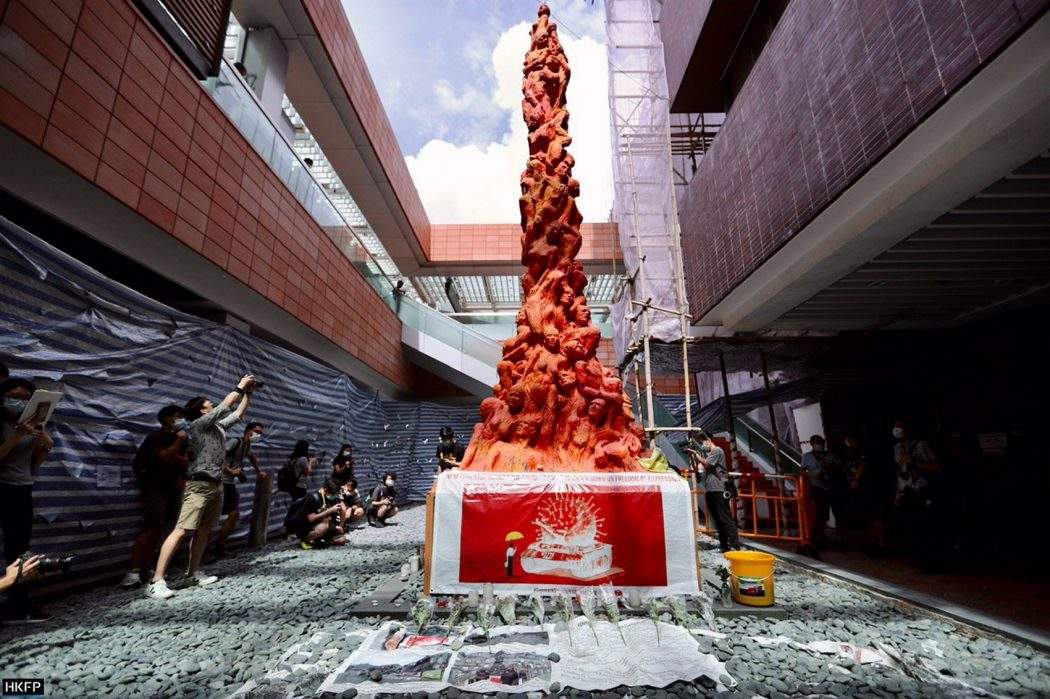Hong Kong, removes statue commemorating Tiananmen Square massacre
Hong Kong is erasing the memory of the Tiananmen Square massacre, the massacre for which China’s communist regime was responsible in the spring of 1989 when it ordered the forcible suppression of student protests inspired by the winds of change coming from Europe.The official numbers of the massacre are unknown, but it is estimated that hundreds to thousands died. In the large Chinese city, a former British colony, stood until Wednesday a statue known as The Pillar of Shame, depicting bodies piled up to remember the hundreds or perhaps thousands of protesters who took to the streets for democracy and were slaughtered by Chinese authorities.
The city was until Wednesday one of the very few places in China where there are memorials to Tiananmen Square: indeed, in the country, talking about those events is almost taboo. The statue, by Danish artist Jens Galschiot, had stood since 1997 (the same year China regained sovereignty over Hong Kong after 156 years of British rule) on the campus of the University of Hong Kong. It is a large sculpture, eight meters high, made of copper, and very impactful. Galschiot had donated the statue to the Hong Kong Alliance in Support of Patriotic Democratic Movements of China, the organization that runs China’s only public commemoration of the massacre, which was held regularly until 2019 (as of the following year it was banned, officially to limit the spread of Covid-19 contagion).
The order to remove the statue was last October, and even then Galschiot said he was shaken by the decision (he called it “a brutal act”), and has already taken action to seek compensation in case the statue is damaged (“this is a sculpture dedicated to the people who died in Beijing in ’89,” he said, “so when you destroy everything like this, it’s like going to the cemetery and destroying their gravestones”). Officially, the statue would be removed as it was ... aged and unsafe. “The decision to remove the statue,” the University of Hong Kong explained in a note, “is based on external legal advice and a risk assessment, and was made in the best interest of the university, which is concerned about potential safety issues arising from the statue’s fragility.”
On Wednesday evening, the statue was fenced off with tarps, after which it was dismantled and the pieces put on a truck and taken away. The BBC reports that some guards prevented journalists from approaching the workers who were carrying out the work and also banned the possibility of filming the event.
“The statue was one of the few prominent public memorials to the crackdown, and it was a reminder of Hong Kong’s freer past,” Ian Chong, associate professor of political science at the National University of Singapore, told the BBC. According to Chong, its removal “takes away another public focal point for the commemoration of the massacre, and seems to signal that the governments in Hong Kong and Beijing will no longer tolerate public displays of remembrance of the June 4 events.” The removal of the statue, the BBC further explains, comes on the heels of a poorly attended Hong Kong parliamentary election that saw pro-Beijing candidates rise to power.
The removal of the Pillar of Shame comes at a very tense time for China: last year, in fact, Beijing introduced a strict national security law that criminalizes secession, subversion, terrorism and collusion with foreign forces: pro-democracy activists have long claimed that the law is being used to suppress civil society, imprison activists themselves and restrict basic freedoms.
Pictured is the Pillar of Shame. Photo by May James/Hong Kong Free Press.
 |
| Hong Kong, removes statue commemorating Tiananmen Square massacre |
Warning: the translation into English of the original Italian article was created using automatic tools. We undertake to review all articles, but we do not guarantee the total absence of inaccuracies in the translation due to the program. You can find the original by clicking on the ITA button. If you find any mistake,please contact us.





























